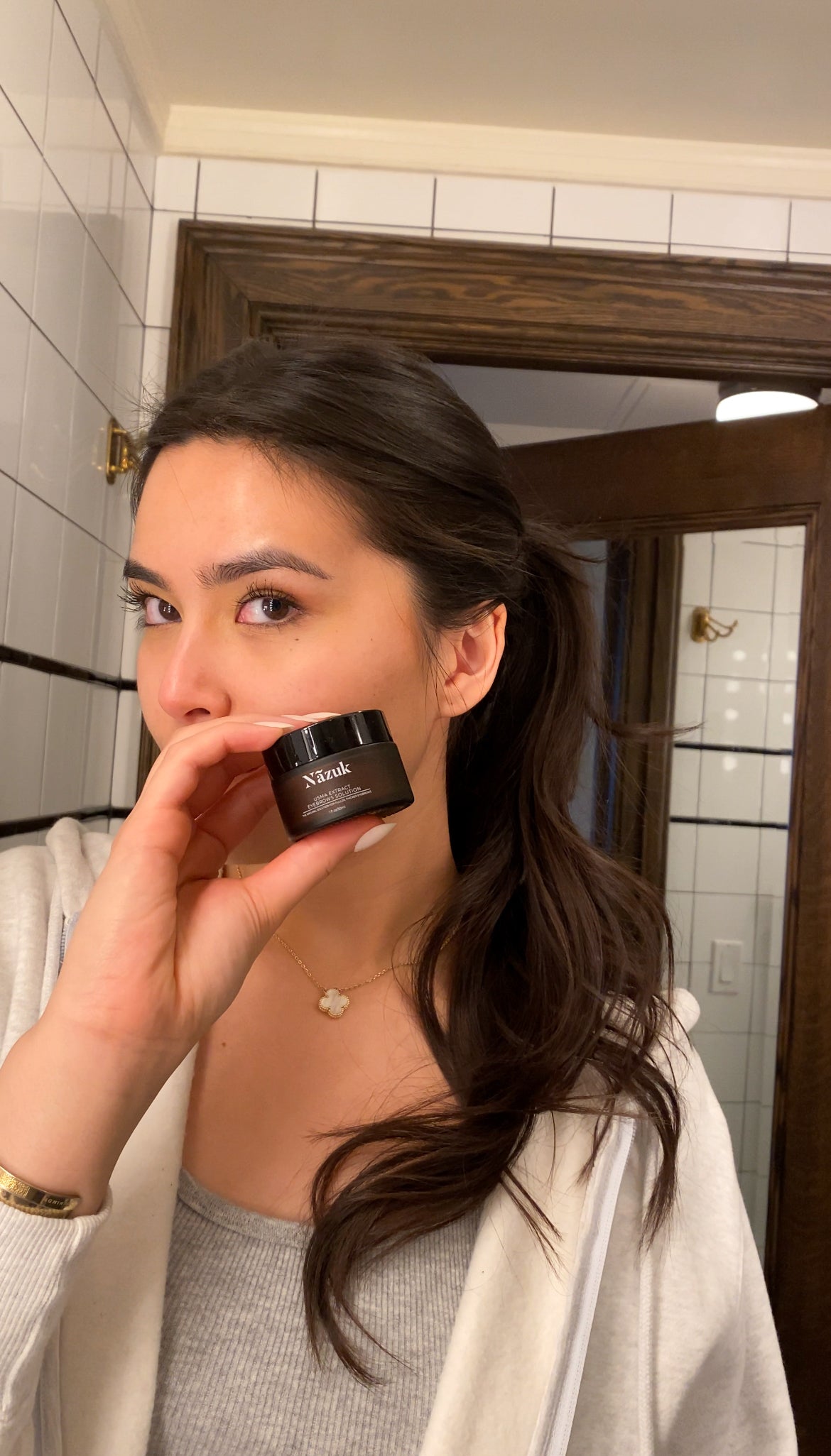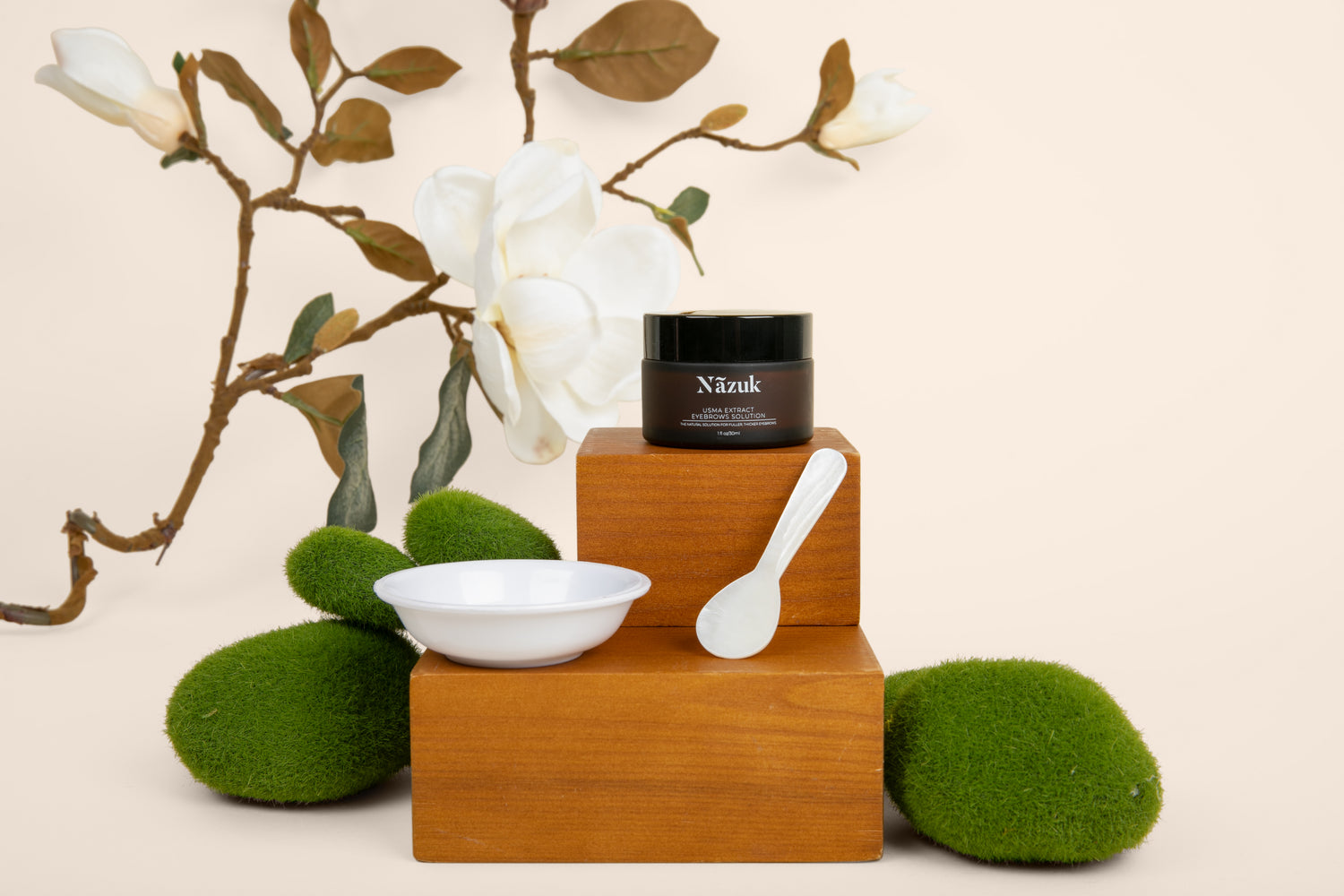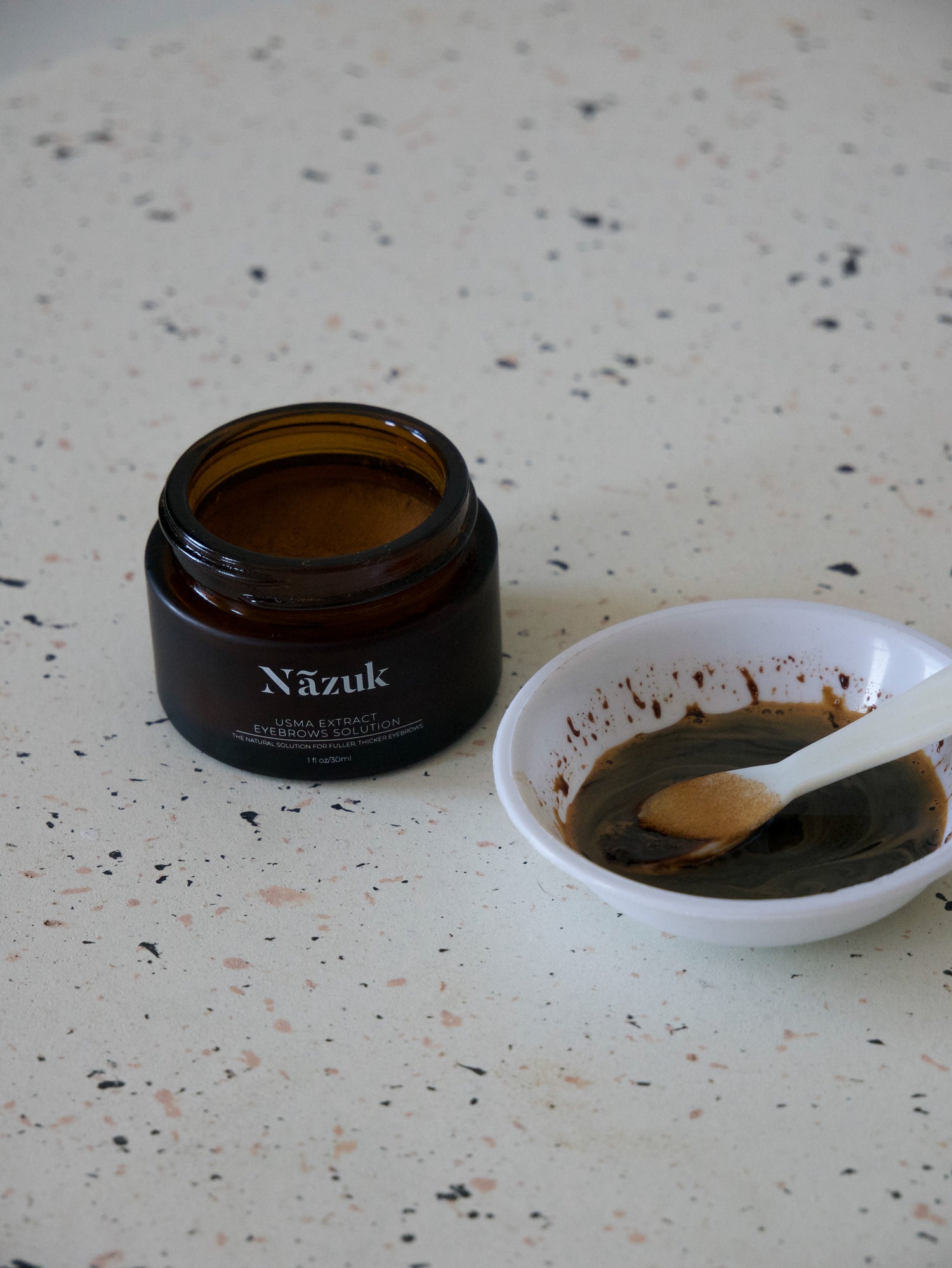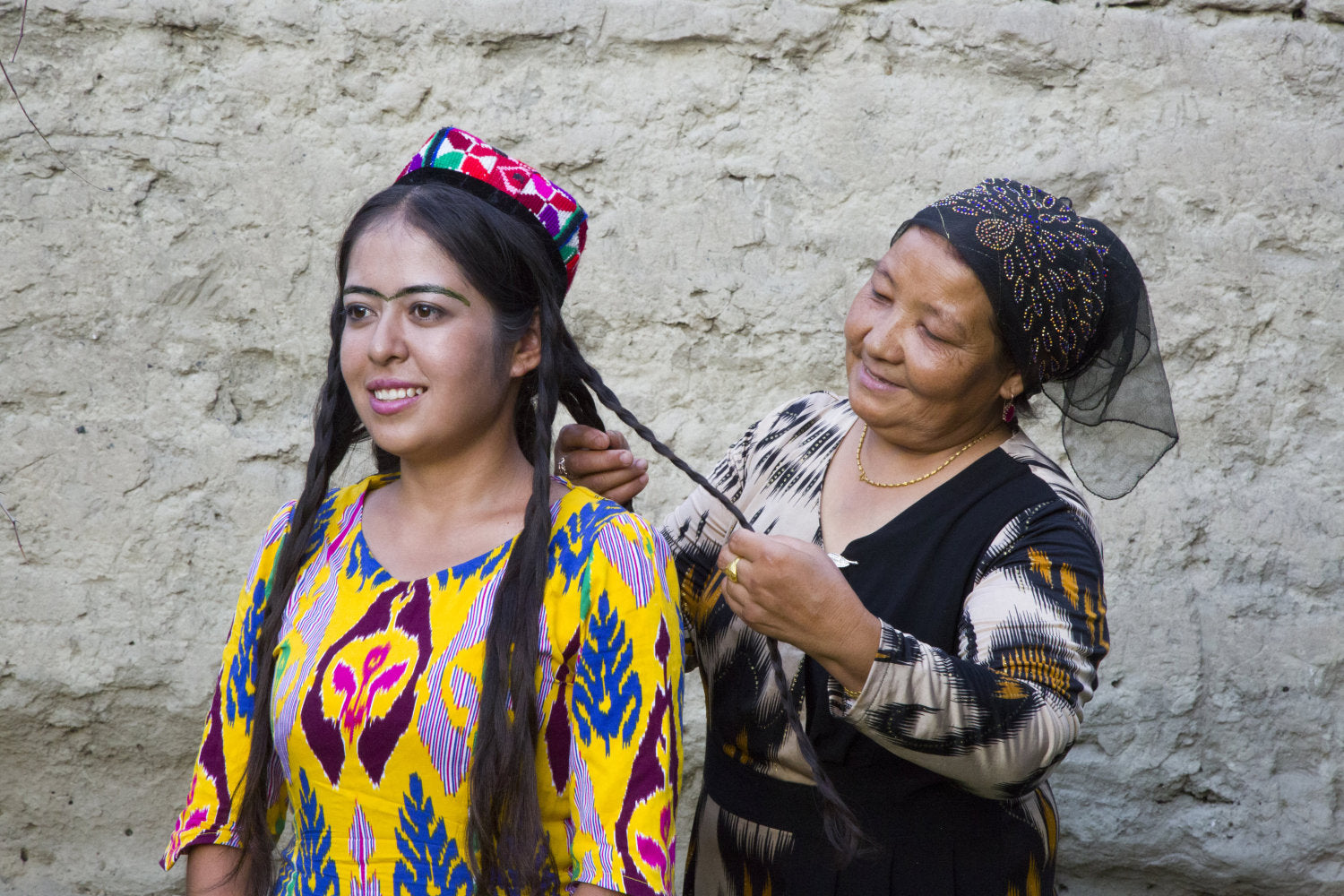Once celebrated, the ultra-thin brow trend has left many with more regret than definition. Years of overplucking didn’t just reshape arches—they quietly damaged delicate follicles beneath the skin, making full, fluffy brows feel like a distant memory.
What most people don’t realize is that repeated tweezing can disrupt the natural hair growth cycle. The trauma builds up, sometimes leaving the follicles dormant or scarred, especially if there's no restorative care in place. But that doesn’t mean the story ends with sparse brows—regrowth is absolutely possible when you treat them right.
The key lies in understanding what stops brows from growing, choosing botanically rich remedies proven to support follicle health, and building a simple, consistent care routine that encourages recovery. From exploring the science behind plant-based ingredients like Usma grass to comparing other natural regrowth options and learning how to care for healing brows day to day, you’ll walk away empowered with practical, rooted advice.
Whether your brows are barely hanging on or just a little patchy, there’s a gentler, more natural path forward.
Why Eyebrows Stop Growing After Overplucking
Years of overplucking can leave brows looking sparse and unresponsive, but the reason why goes deeper than surface damage. Understanding how brow follicles respond to trauma helps clarify what’s really happening beneath the skin—and what can still be reversed.
The biology behind brow hair loss
Eyebrow hair follows a growth cycle similar to scalp hair, consisting of growth (anagen), transition (catagen), and rest (telogen) phases. When you pluck a brow hair, you're removing it from the root—repeatedly doing this can traumatize the follicle. Over time, this trauma shortens the anagen phase or stops it altogether, leading to slower, weaker regrowth. In some cases, the follicle may go dormant, meaning it’s still there but not actively producing hair unless reactivated.
Common myths about permanent damage
One of the biggest misconceptions is that all overplucked brows are permanently damaged. In reality, many follicles are simply dormant—not dead. Dormant follicles can still be revived with the right stimulation and care. The idea that you’ve "ruined your brows forever" is often rooted in frustration, not fact. The key is understanding the difference between truly scarred follicles and those just in a prolonged rest phase.
When to seek professional evaluation
Sometimes, thinning brows signal more than just cosmetic damage. Conditions like alopecia areata or thyroid imbalances can also contribute to eyebrow loss. If your brows stopped growing suddenly, show patchy loss, or haven’t responded to any treatments after months of care, it may be time to consult a dermatologist. A professional can evaluate whether the follicles are dormant or destroyed and recommend next steps—from topical solutions to clinical regrowth treatments.
Eyebrow regrowth starts with knowledge—and understanding why brows stop growing is the first step toward restoring them naturally.
Natural Ingredients That Stimulate Brow Regrowth
Overplucked eyebrows can feel like a permanent mistake—but nature offers a powerful path to recovery. Some of the most effective regrowth solutions come from time-honored botanicals, with Usma grass leading the way in both tradition and science. Let’s explore the ingredients that nurture dormant follicles back to life.
Usma Grass: A Time-Tested Uyghur Remedy
For centuries, Usma grass has been a cherished beauty staple in Uyghur culture, passed down through generations for its eyebrow-thickening effects. This unassuming leafy green is packed with glucosinolates—a class of natural compounds known to stimulate blood flow and activate hair follicles. When juiced fresh or applied as a concentrated extract, Usma delivers visible improvements in eyebrow density, especially for those struggling with sparse or overplucked brows. Its role in traditional Silk Road beauty rituals has now found modern credibility through Nazuk Beauty’s formulations, which preserve its cultural roots while enhancing effectiveness.
To understand why Usma grass works so well, it helps to explore its unique composition and traditional usage in more depth. Learn more about the science and heritage behind Usma grass here.
Scientific Support Behind Plant-Based Regrowth
What sets ingredients like Usma apart from the rest is their rich profile of active compounds. Specifically, phytochemicals such as glucosinolates and saponins—both found in Usma grass—are known to stimulate follicular activity and support a healthy regrowth cycle. According to a review published by PubMed Central, these compounds improve microcirculation around hair follicles, reduce inflammation, and may even prolong the anagen (growth) phase of hair.
This scientific backing reinforces what traditional beauty rituals have long known—plant-powered ingredients aren’t just gentle; they’re effective. When integrated into regular brow care, they help reawaken follicles that may have gone dormant due to years of tweezing or waxing.
Comparison with Other Natural Remedies
While Usma grass stands out, it’s not the only plant-based solution available. Castor oil, for instance, has long been used to promote hair regrowth thanks to its high ricinoleic acid content. Similarly, aloe vera offers a soothing alternative, known to reduce irritation and hydrate the skin around the brows. These remedies can provide mild support, but they often lack the targeted potency of ingredients like Usma.
A Healthline comparison of natural eyebrow regrowth treatments notes that while castor oil and similar options can help condition the brow area, they tend to work more slowly and may not penetrate as deeply as specialized extracts. That’s where Usma grass has the advantage—not just in folklore, but in its chemical makeup that actively supports follicular stimulation and regrowth.
Eyebrow recovery is most successful when the chosen ingredients align with both tradition and proven efficacy. With Usma-based solutions, the two come together seamlessly, offering a powerful alternative to synthetic treatments or hit-or-miss DIY methods.
Brow-Care Habits to Encourage Natural Recovery
A consistent brow-care routine is just as essential as the ingredients you use. Once the damage from overplucking is done, giving your eyebrows the environment they need to recover—gently and naturally—is key. These habits are designed to protect your follicles, boost regrowth, and encourage long-term resilience.
Daily routines that support regrowth
The first step in recovery is eliminating the habits that caused damage. That means putting down the tweezers (for good), avoiding excessive brushing, and being mindful of harsh skincare products that may irritate delicate brow areas. Instead, focus on nurturing habits that support your skin and hair follicles:
-
Use a soft spoolie to gently brush your brows once a day to stimulate circulation.
-
Avoid overwashing the area with exfoliating cleansers or alcohol-based toners.
-
Incorporate nourishing treatments like brow masks into your weekly schedule to replenish moisture and nutrients.
Consistency is key—even small daily habits add up over time and lay the foundation for visible progress.
How to apply nutrient-rich treatments effectively
To get the most from any natural regrowth treatment, correct application matters. For example, Nãzuk Beauty’s Eyebrow Mask is designed to work with your skin’s natural rhythms, so applying it properly helps maximize absorption and results.
-
Start with a clean face—use a gentle cleanser and pat dry.
-
Mix the mask powder with water using the included bowl and spoon until it forms a smooth paste.
-
Apply a thin, even layer directly to each brow, covering the entire arch.
-
Leave on for 15–20 minutes, then rinse with lukewarm water.
-
Repeat 2–3 times a week for best results.
This treatment supports both follicle health and hydration, giving overplucked brows the environment they need to thrive again.
Patience, consistency, and realistic timelines
Natural regrowth doesn’t happen overnight. In most cases, it takes several weeks—sometimes even months—for sparse brows to show noticeable change. What matters most is sticking to your routine and not panicking if you don’t see immediate results.
Track your progress by taking a photo every two weeks under similar lighting. You may not notice daily improvements, but when you compare photos over time, the difference becomes clear. Most users report subtle thickening in 4–6 weeks and fuller arches within 8–12 weeks when consistent with their regimen.
Celebrate the small wins. Regrowth is a journey, and every new hair is a step toward fuller, healthier brows.
Reversing the effects of overplucked brows isn’t an overnight process, but it’s far from impossible. With consistent care, nutrient-rich botanical treatments, and a bit of patience, your natural brows can make a remarkable comeback. Usma grass, a time-honored remedy with deep roots in Uyghur beauty traditions, offers both scientific potency and cultural depth—making it an exceptional choice for those ready to rebuild what overplucking took away. If you're drawn to heritage-driven beauty and real, lasting results, this story of growing up with Usma might resonate even deeper. Ready to restore your brows naturally? Try Nãzuk Beauty’s Usma-based Eyebrow Mask and begin your regrowth journey today.





